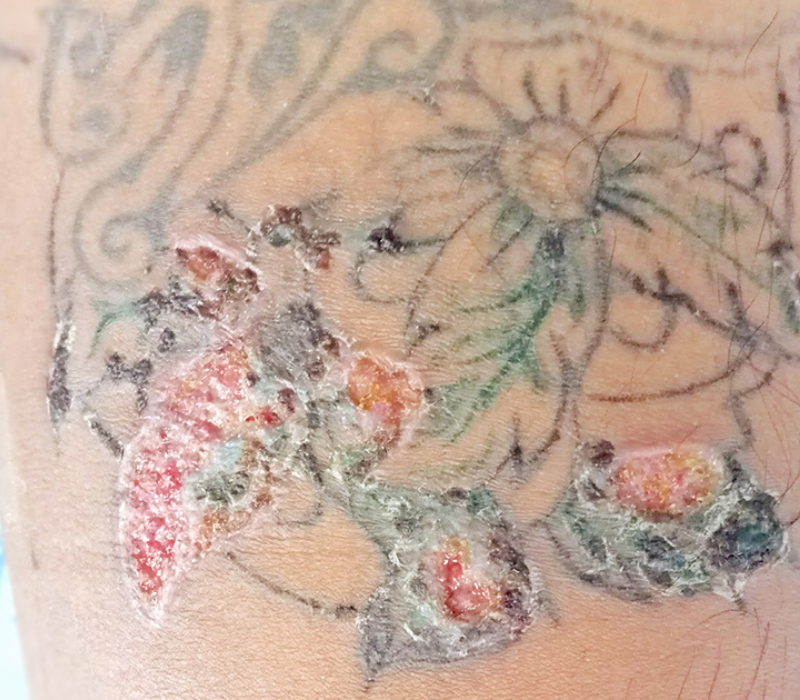The Hidden Dangers of Tattoo Inks: Bacteria, Chemicals, and Risks You Need to Know
Recent studies have shown that many tattoo inks contain dangerous chemicals and potentially infectious bacteria.
Tattoos are more popular than ever, including traditional tattoos and those used as permanent makeup. Even if you don’t have a tattoo yourself, it’s likely you know a family member or friend who does. According to a recent poll, 40% of Americans aged 18-34 years old have at least one tattoo.1
Despite their cultural popularity and potential hazards, the U. S. Food and Drug Administration (FDA) does not regulate the tattoo industry. The FDA considers tattoos and permanent makeup as cosmetics, so they do not regulate inks used for the purpose of injection into skin; they do not approve hennas or dyes for use on skin; nor do they regulate the practices performed in tattoo parlors.1 What the FDA does regulate are the pigments used as color additives in inks and they also monitor the industry for consumer reported problems.
Consequently, instead of federal oversight, regulations and testing standards for the tattoo industry are conducted at the local level by state and local health departments which may vary by region. With such variation in oversight, the industry has shown a weakness in training and certification, especially in areas such as in blood-borne pathogens, and the potential for increased consumer risks from infection due to contamination.

If you are considering getting a tattoo, you might want to think again. Research shows that “some inks contain pigments used in printer toner or car paint.”1 Chemicals that may have health and safety hazards not properly identified for this intended use. Moreover, a recent study shows that tattoo and permanent makeup ink may harbor both aerobic and anaerobic bacteria, posing a serious threat of infection.

In this novel study, researchers tested 75 unopened and sealed commercial tattoo inks from 14 different manufacturers.2 Their findings indicate that claims for sterility on the container label did not guarantee a product was free of bacteria, with 35% of the products exhibiting some type of bacterial contamination.2 Alarmingly, both Staphylococcus saprophyticus and Cutibacterium acnes, two potentially pathogenic strains, have been isolated together from the same ink samples.3 Anaerobic bacteria like C. acnes can thrive in low-oxygen environments, making the dermal layer of skin the perfect habitat for the organism to grow.3 A recent recall of inks were declared by the FDA for products that could cause infections and rashes that could lead to permanent scarring.4
To add to the risks associated with tattoos, a recent study in Sweden showed that the incidence of lymphoma cancers were 21% higher amongst those that had been tattooed. This is because it's been known that the ink particles tend to accumulate in the lymph nodes.5
These studies highlight the serious risks associated with the use of tattoo inks. In addition, it underscores the need for enhanced industry federal oversight, stricter labeling requirements, and higher sterility standards for permanent ink manufacturers.
Meet the author

LEAD TECHNICAL SUPPORT SPECIALIST at HARDY DIAGNOSTICS
Allie Malmberg, B.S. Cellular and Molecular Biology
While finishing her last quarter to earn her B.S in Cellular and Molecular Biology at Cal Poly San Luis Obispo, Allie began working for Hardy Diagnostics as a Technical Services Microbiologist. Today she leads a team of scientists who are passionate in supporting our cusotmers and providing the Culture of Service that Hardy is known for. After work you can find Allie taking a yoga or pilates class, listening to an audiobook, or planning her next international adventure.







